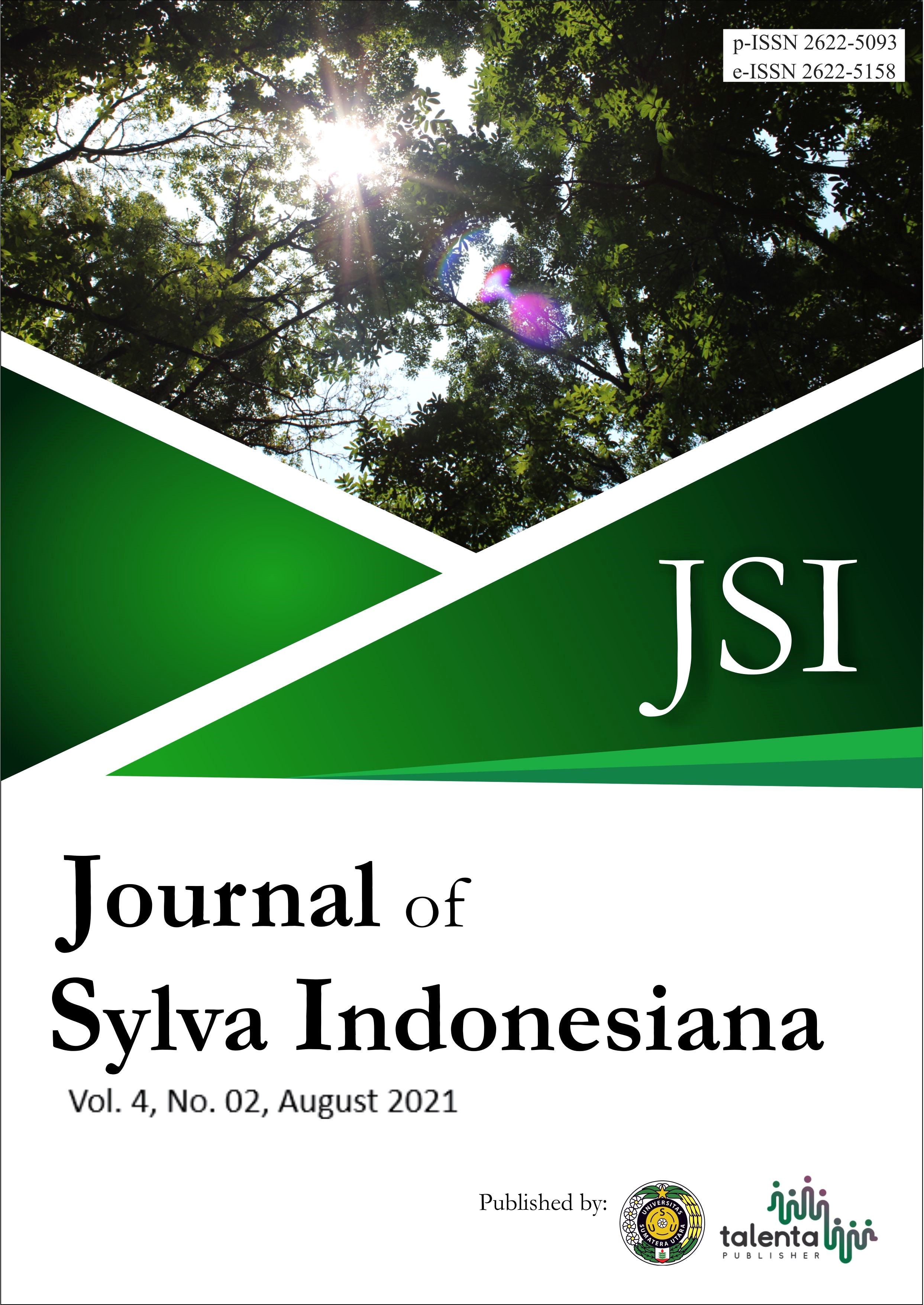Morphological diversity of mindi (Melia azedarach) from agroforestry system in North Sumatra, Indonesia
DOI:
https://doi.org/10.32734/jsi.v4i02.5520Keywords:
Melia azedarach, morphological diversity, agroforestry, North SumatraAbstract
Mindi (Melia azedarach) is a fast-growing woody plant with potential for community forest development. Mindi wood is used to furniture material, parquet, fancy plywood, and fancy laminated veneer, and it is also exported. Although the community forest in Deli Serdang Regency is established as a seed source for mindi in North Sumatra, information on its diversity is still lacking. The aim of this research was to get information about morphological differentiation of mindi in Deli Serdang Regency. Direct observation and measurement on morphological and growth character of mindi had been conducted in three populations of community forest in Deli Serdang Regency. Those were Percut Sei Tuan population, Biru-Biru population, and Pancur Batu population. The result showed that of 19 observed morphological characters, there were two characters: number of leave and fruit weight able to differentiate the populations—individual tree from three population clustering into three groups. The first cluster consists of 35 individual trees from Percut Sei Tuan (7 trees), Biru-Biru (12 trees), and Pancur Batu (16 trees). The second cluster consist of 24 trees originated from Percut Sei Tuan (13 trees), Biru-Biru (8 trees), and Pancur Batu (3 trees). A third cluster consists of one tree from Pancur Batu.
Downloads
Downloads
Published
How to Cite
Issue
Section
License

This work is licensed under a Creative Commons Attribution-NonCommercial 4.0 International License.



















